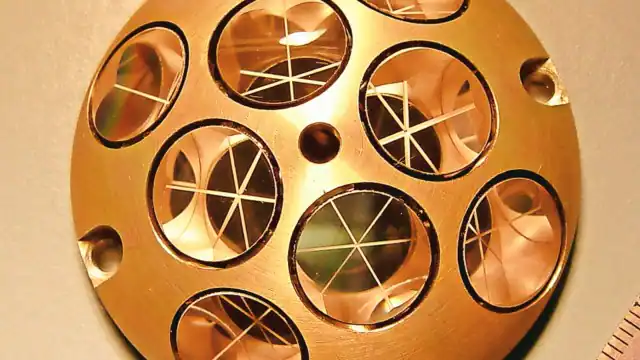Chandrayaan-3 lander Vikram is now firmly established as a landmark on the Moon.
A NASA spacecraft, currently orbiting the Moon, sent laser beams to a tiny mirror-based instrument onboard Vikram, and successfully received the reflected beams, thus verifying the possibility of a new way to precisely locate objects on the Moon.
NASA’s Lunar Reconnaissance Orbiter (LRO), which has been going around the Moon since June 2009, had performed the laser beam experiment on December 12 last year, but it was only on Friday that both NASA and Indian Space Research Organisation (ISRO) revealed the result. The beams were made to bounce off the Laser Retroreflector Array (LRA), a 2-inch wide dome-shaped instrument studded with eight finely-polished mirrors. The mirrors are oriented in such a way that they can tap and reflect light coming in from any direction.
The LRA, which weighs just 20 grams, was put on Vikram by NASA precisely for this experiment. The instrument, which has no electronics, does not need power or maintenance and thus can remain useful for years, even decades. With this experiment, all the seven payloads on Vikram, and the two on Pragyaan rover, have now been tested and verified to have functioned as designed.
“We have shown that we can locate our retroreflector on the surface from the Moon’s orbit. The next step is to improve the technique so that it can become routine for missions that want to use these retroreflectors in the future,” a NASA statement quoted Xiaoli Sun, the leader of the team that had developed the LRA instrument, as saying.
This is not the first LRA to be deployed on the Moon. Such instruments were placed by the Apollo missions as well, and are still used. In fact, it was one of these instruments that revealed that the Moon was moving away from the Earth by a rate of about 1.5 inches a year following precise measurements in experiments involving sending of light waves from Earth and capturing the beams reflected from these instruments.
The LRA onboard Vikram is the tiniest, and most sophisticated, of them all, and has uses in many different kinds of situations. It is also the only one available near the South Pole of the Moon.
“The new generation of tiny retroreflectors has even more applications than their large predecessors. On the International Space Station, they are used as precision markers that help cargo delivery spacecraft dock autonomously. In the future, they could guide Artemis (NASA’s Return to Moon programme) astronauts to the surface in the dark, for example, or mark the locations of spacecraft already on the surface, helping astronauts or uncrewed spacecraft land next to them,” the NASA statement said.
ISRO said the LRA onboard Vikram was designed to last for decades.
“NASA’s LRA on Chandrayaan-3’s Vikram lander will continue to serve as a long-term geodetic station and a location marker on the lunar surface, benefitting current and future lunar missions. These measurements, apart from helping in precise determination of spacecraft’s orbital position, will help refine the lunar geodetic frame, revealing insights into the Moon’s dynamics, internal structure, and gravitational anomalies,” the ISRO said.
A recent US spacecraft, sent by a private company, was also carrying an LRA instrument made by NASA. The spacecraft launched on January 8 this year developed snags during the flight and is now not in a position to make a landing on the Moon. The Japanese SLIM mission, which landed on the Moon on Friday, also has a similar instrument.
Like us on Facebook or follow us on Twitter & Pinterest and Instagram and Keep visiting us for Latest News Online.
CREDIT: INDIAN EXPRESS


